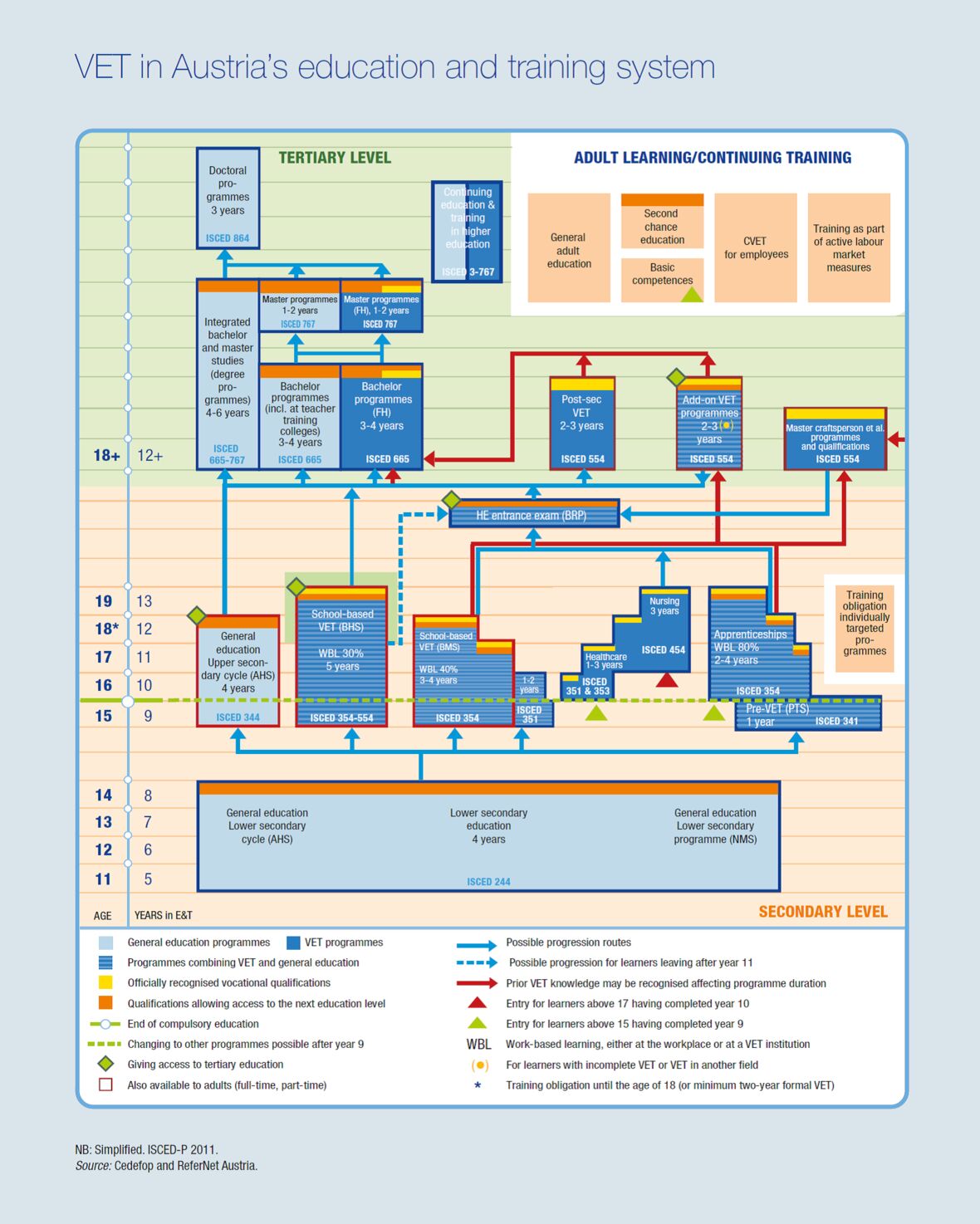Education System and VET System
Apprenticeship training is one of four options open to learners at the upper secondary level. Two additional options are different types of VET full-time schools. Only one of the three VET tracks include direct access to higher education via the university entrance exam Matura. With the Berufsreifeprüfung and the Berufsmatura (combination of apprenticeship training and HE entrance examination), steps have been taken to increase permeability from the dual system to higher education.
Fig. 3: VET in Austria’s education and training system

online available: http://www.cedefop.europa.eu/files/8048_en.pdf
Structure of the education system and VET in general
The nine-year compulsory schooling period in Austria starts with attendance of the four-year primary school. At the lower secondary level, pupils have the choice between two four-year school forms: the lower level of academic secondary school (Gymnasium) and new secondary school (Neue Mittelschule).
Dual VET is one of four options open to students at the upper secondary level. Whereas dual VET can only be started upon completion of the nine-year compulsory schooling period, the other pathways can be started immediately after the lower level of academic secondary school or new secondary school, i.e. after eight years. One of these pathways is the upper level of academic secondary school. This level is completed after four years with the upper secondary school-leaving exam and the matriculation certificate (Matura), which gives access to all tertiary qualifications. The other two options are the VET tracks school for intermediate vocational education and college for higher vocational education (the latter is completed with the matriculation and diploma exam). This means that together with dual VET (apprenticeship training), learners have the choice between three VET pathways at the upper secondary level.
National Qualifications Framework, allocation of VET qualifications
The implementation of a National Qualifications Framework (NQF) has been a key objective of educational policy for some years. In 2014/15 an NQF Act was drafted. In March 2016, this Act entered into force. In June 2016, the steering committee had its constitutional meeting. To date, four qualifications have been allocated to the NQF (cf. www.qualifikationsregister.at).
Overview of pathways within the VET system
- Learners at the upper secondary level have the choice between two pre-vocational types of school and three VET programmes.
- Pre-vocational school (Polytechnische Schule, PTS): one-year pre-professional school with 16,135 students in 2016/17
- Schools for intermediate vocational education (berufsbildende mittlere Schule, BMS): one- and two-year pre-professional schools and (most of them) three and four-year VET schools with various area specialisations (business, technology, agriculture, social affairs, tourism, etc.); 44,310 students in 2016/17
- Colleges for higher vocational education (berufsbildende höhere Schule, BHS), five-year VET colleges which lead to the upper secondary school-leaving certificate with various area specialisations (business, technology, fashion, design, agriculture, tourism, kindergarten teacher training, etc.); 133,447 students in 2016/17
- Dual VET (apprenticeship/apprenticeship training), from the tenth grade, around 215 two- to four-year apprenticeship occupations in various area specialisations (construction, electrical, information technology, wholesale and retail trade, etc.)